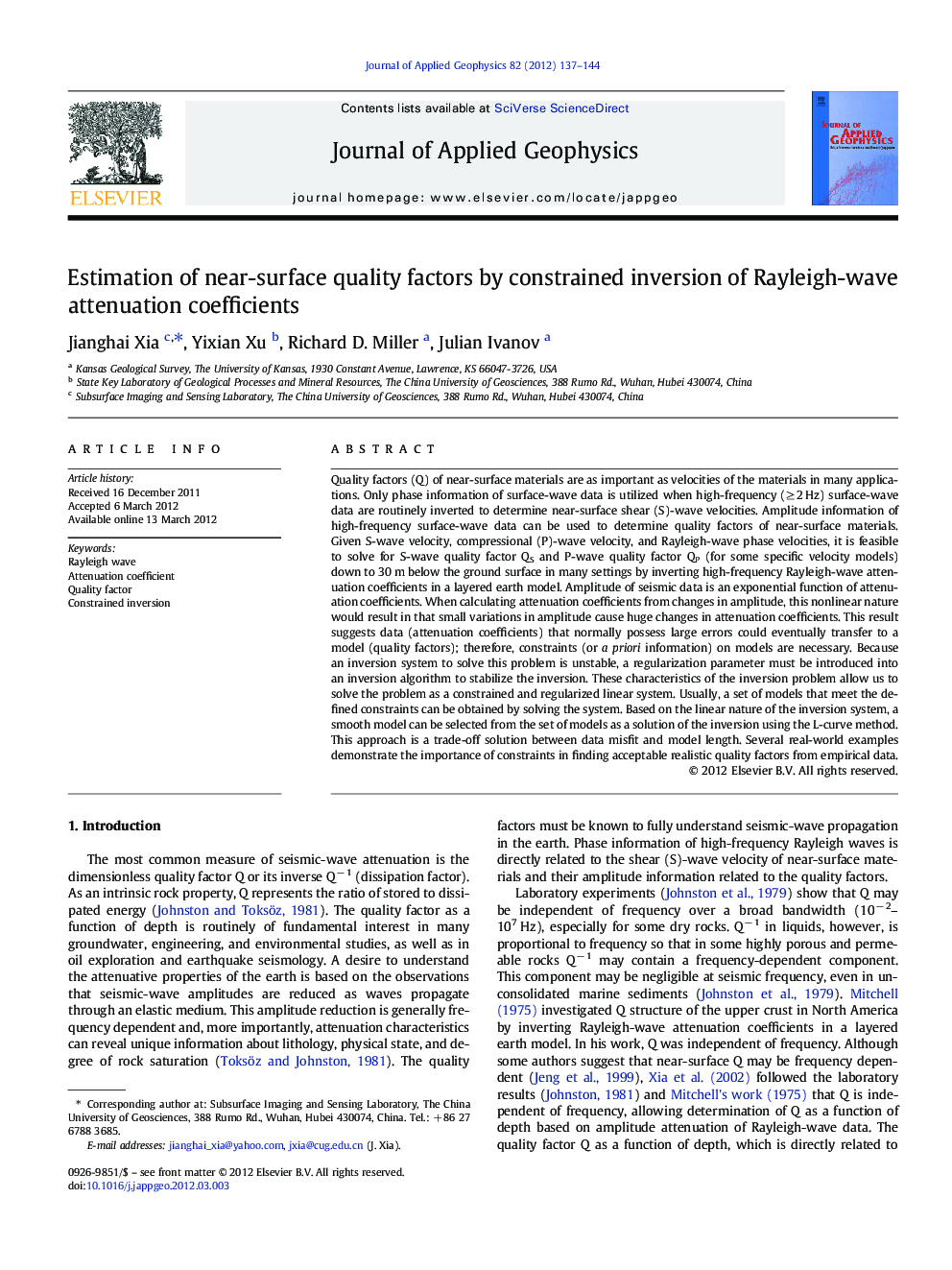| کد مقاله | کد نشریه | سال انتشار | مقاله انگلیسی | نسخه تمام متن |
|---|---|---|---|---|
| 4740552 | 1641169 | 2012 | 8 صفحه PDF | دانلود رایگان |

Quality factors (Q) of near-surface materials are as important as velocities of the materials in many applications. Only phase information of surface-wave data is utilized when high-frequency (≥ 2 Hz) surface-wave data are routinely inverted to determine near-surface shear (S)-wave velocities. Amplitude information of high-frequency surface-wave data can be used to determine quality factors of near-surface materials. Given S-wave velocity, compressional (P)-wave velocity, and Rayleigh-wave phase velocities, it is feasible to solve for S-wave quality factor QS and P-wave quality factor QP (for some specific velocity models) down to 30 m below the ground surface in many settings by inverting high-frequency Rayleigh-wave attenuation coefficients in a layered earth model. Amplitude of seismic data is an exponential function of attenuation coefficients. When calculating attenuation coefficients from changes in amplitude, this nonlinear nature would result in that small variations in amplitude cause huge changes in attenuation coefficients. This result suggests data (attenuation coefficients) that normally possess large errors could eventually transfer to a model (quality factors); therefore, constraints (or a priori information) on models are necessary. Because an inversion system to solve this problem is unstable, a regularization parameter must be introduced into an inversion algorithm to stabilize the inversion. These characteristics of the inversion problem allow us to solve the problem as a constrained and regularized linear system. Usually, a set of models that meet the defined constraints can be obtained by solving the system. Based on the linear nature of the inversion system, a smooth model can be selected from the set of models as a solution of the inversion using the L-curve method. This approach is a trade-off solution between data misfit and model length. Several real-world examples demonstrate the importance of constraints in finding acceptable realistic quality factors from empirical data.
► Amplitude of seismic data is an exponential function of attenuation coefficients.
► Small variations in amplitude cause huge changes in attenuation coefficients.
► Large errors in attenuation coefficients could transfer to quality factors.
► Constraints (or a priori information) on models are necessary.
► A realistic model can be selected using the L-curve method.
Journal: Journal of Applied Geophysics - Volume 82, July 2012, Pages 137–144